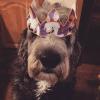Serendip is an independent site partnering with faculty at multiple colleges and universities around the world. Happy exploring!
You are here
Home » Web Paper or Special Event
By Lebewesen
November 11, 2016 - 17:41
In Ruth Ozeki’s novel All Over Creation, identity and environment intersect in a complicated way. For one character in particular, this intersection is quite complex and difficult to define. Yumi Fuller, the daughter of a Japanese woman and a native Idahoan, grows up in an area where she, as an Asian American, looks quite unlike any of her other peers. At age fourteen, she runs away, leaving her home environment behind and focusing on creating a new life, as well as a new identity, for herself. No longer is she the foreigner in Idaho: she is now the self-made woman: A real-estate agent, professor, and single mother.
November 11, 2016 - 17:40
Elliot Rhodes is only highlighted as the teacher that rapes Yumi in “All Over Creation”. However, he is also the new guy in town and everyone is wary of him for good reason. Elliot is the real foreigner in their quiet farm town and this is emphasized by Lloyd’s representation of the American Dream and Momoko’s assimilated nature.
November 11, 2016 - 17:35
In the novel All Over Creation by Ruth Ozeki, Cass Unger Quinn begins by having to play a potato in the school Thanksgiving pageant and ultimately develops her identity as a potato as well as negative body image. From her childhood to her adult life, Cass has been surrounded by potatoes and they influenced her identity. Throughout the novel, she consistently returns to the idea of her as a potato and it plagues her mind. Her similarities with the potato are also even more accented when placed next to Yumi.
November 11, 2016 - 17:10
Who is to Blame?
What is to blame for the collapse of Western Civilization? Naomi Oreskes and Erik Conway wrote the Collapse of Western Civilization to show the fictional future of what Western Civilization will be like if we do not put emphasis on climate change. It raised the question of who is to blame for why the environment is deteriorating? Is it because we need better leaders, greed for money, or there is no trust in the scientists? I know that there are many factors that play into effect on the climate, but I think there is one that has the greatest effect.
November 11, 2016 - 13:06
An environment is characterized by its society, the area, and all of its inhabitants. All of the characters in All Over Creation by Ruth Ozeki, have very distinct identities that were transformed by many different aspects of their lives.
November 11, 2016 - 12:59
Princess Jefferson
Your Role As a Seed
“I don’t want to be a vegetable.” (Ozeiki p.352). No one wants to be a vegetable, still and dependent upon others for survival, but everyone wants to be a seed. A seed that can grow to be whatever it desires to be. A seed that with a little love and patience can grow into the world’s tallest tree or strongest earthly object. A seed can be anything that takes the form of life. Mother nature is unique. She gives every seed a task, and every seed must find its way to fulfill that task.
November 10, 2016 - 19:53
“Anachronistic Encounters”:
Cross-Temporal Touch and the Expansive Present in Beloved
Introduction
November 9, 2016 - 14:57
The world is changing, the environment is dying, and we, humans, are to blame. Maybe those are generalizations of global warming and the human effect but to some extent the contributions of industrialization and overpopulation have efficiently been disastrous to the environment. In Rudy Ozeki’s fiction novel, All Over Creation, the story of a potato farm is transformed from a personal narrative to a large scale analysis of the ecological trauma that humans are causing. The intersection between natural and personal becomes the focus of the novel as it play with the interconnection between these two sphere through the lens of a contact zone.
November 8, 2016 - 01:14
Ruth Ozeki’s novel All Over Creation is a book about juxtaposition, parallels, and intersections. While this may be said about many great novels, Ozeki uniquely brings to life contrasting narratives of social and environmental issues for the purpose of helping herself and her readers “interrogate” worldly issues instead of pushing a predetermined opinion (Ozeki 2016). Out in the fields, Ozeki develops the novel’s primary debate as a struggle between agribusiness-supported genetically modified crops and environmental activists. Although any form of agriculture is human intervention in nature, this debate can be characterized as “natural” methods coming in contact with explicit human-engineered farming.
November 7, 2016 - 20:57
Subject to Display by Jennifer A. González offers an analysis of the visual culture of “race” throughout the work of five contemporary artists who became well known during the 1990s. Over the past 20 years, artists James Luna, Fred Wilson, Amalia Mesa-Bains, Pepón Osorio, and Renée Green have had a profound effect on the practice and meaning of installation art in the United States. In Subject to Display, Jennifer González provides the first substantiated examination and evaluation of their contribution, connecting the history of race discourse to innovations in contemporary art. Race, according to González is a social discourse that has a visual history (González 3).










